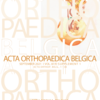Clinical and radiographic results of total hip arthroplasty after a minimum follow-up period of 5 years after insertion of a TriLock bone preservation stem
total hip arthroplasty ; TriLock BPS ; midterm clinical results ; Dorr types
Published online: Oct 08 2021
Abstract
The TriLock bone preservation stem (BPS) is a device that allows proximal fixation of the implant in total hip arthroplasty (THA). The purpose of this study was to evaluate the mid-term clinical and radiographic results of the TriLock BPS and investigate the differences in the results as a function of medullary cavity shape.
This study analyzed 76 consecutive patients (62 women and 14 men) who underwent THA using the TriLock BPS between April 2012 and September 2013. The minimum clinical and radiographic follow- up period for patients was 5 years (mean, 5.6 years). The radiographic results and Harris Hip Scores (HHS) were evaluated across the three Dorr femoral bone classifications.
The postoperative HHSs were significantly higher than the preoperative HHSs (p<0.05). There were no significant differences with respect to the three Dorr types based on preoperative and postoperative HHS scores. Stress shielding was observed in 66 hips. Spot welds and cortical hypertrophy were observed in various zones of 31 and 18 hips, respectively. There was no significant difference in the occurrence of stress shielding, spot welds, or cortical hypertrophy among the three Dorr types. There were no complications across all cases during the follow-up period.
Mid-term clinical results were good regardless of the medullary cavity shape. Furthermore, the occurrence of stress shielding, spot welds, and cortical hypertrophy was not significantly different among the three Dorr types. Therefore, the TriLcok BPS is a surgical option, regardless of the type of medullary cavity shape, for primary THA.
